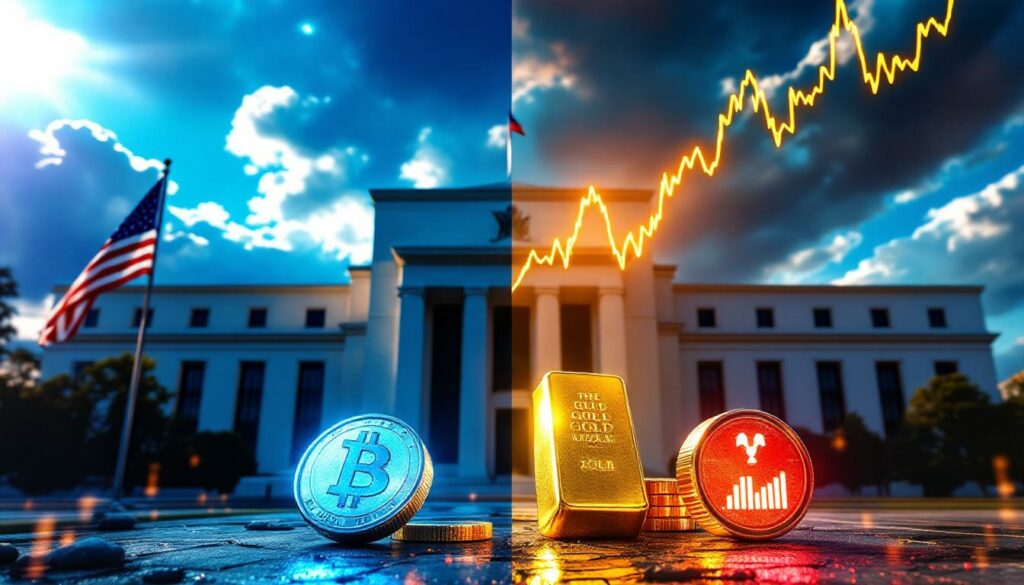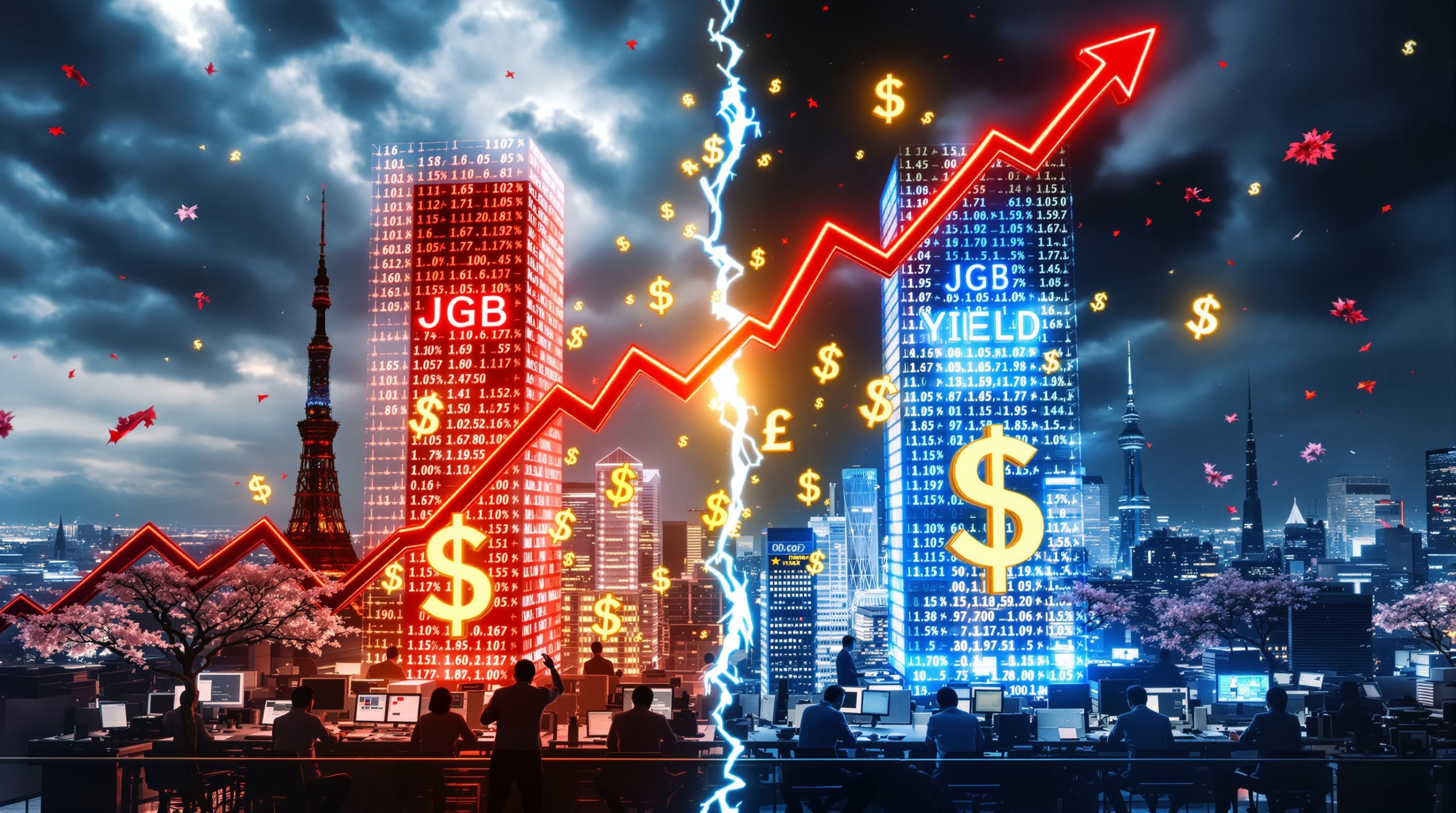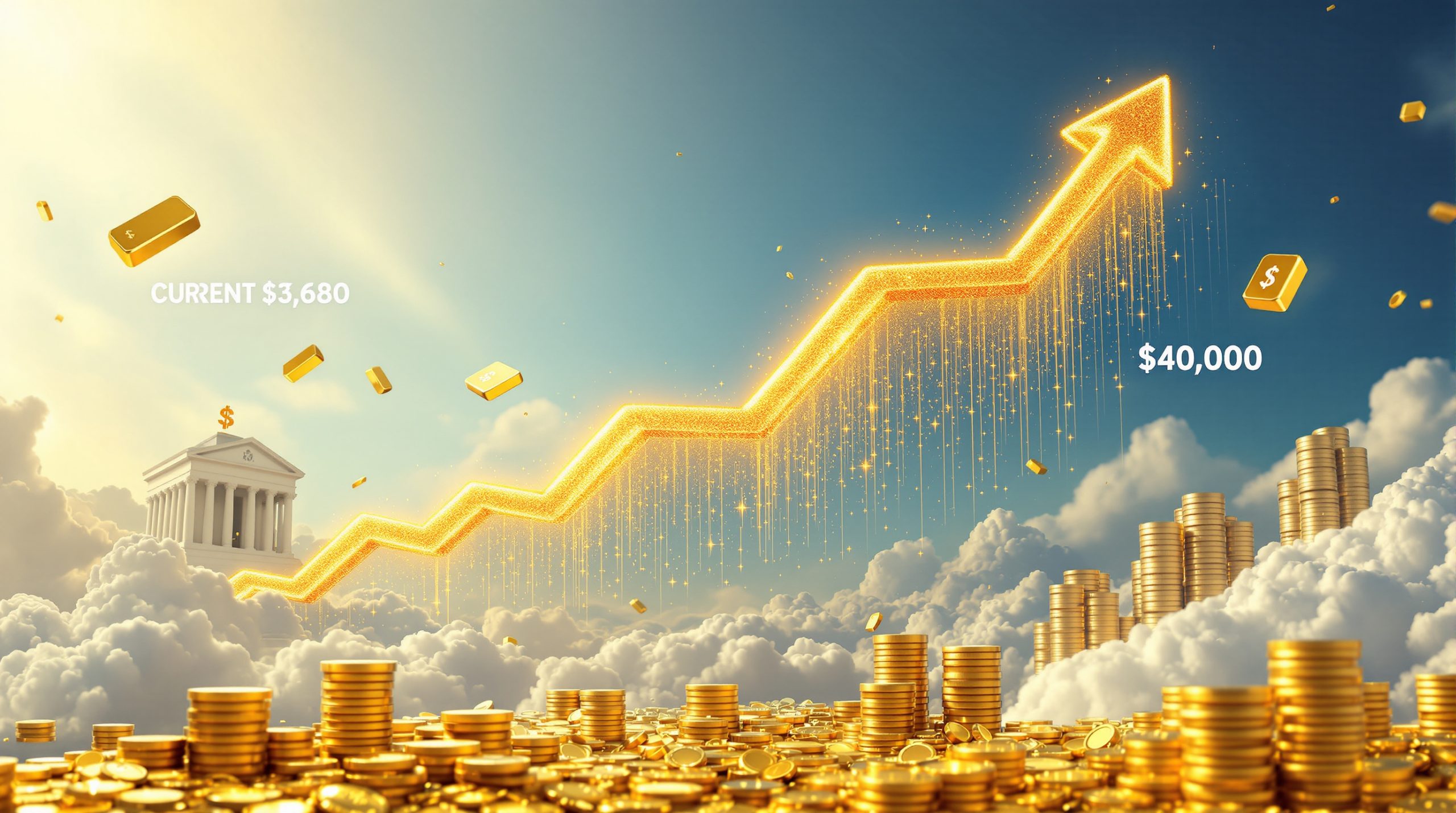What is the Federal Reserve's Current Stance on Interest Rates?
The Fed's Latest Decision
The Federal Reserve maintained steady interest rates in their most recent meeting, with the decision receiving unanimous support from all voting members. This marks a continued period of policy stability following the aggressive rate hiking cycle that characterized 2023 and early 2024.
Chair Jerome Powell emphasized that the central bank is "well positioned" despite lingering economic uncertainties. His careful wording suggests confidence in the current policy stance while acknowledging potential challenges ahead.
"We believe monetary policy is well positioned to achieve our goals," Powell stated during the press conference, maintaining a balance between optimism and caution about the economic outlook.
Shifting Outlook on Future Rate Cuts
A significant policy shift has emerged within the Federal Reserve, with 9 of 19 policy makers now forecasting fewer rate cuts than previously projected. Even more notable, 7 policy makers now anticipate no cuts at all during the current year.
This represents a dramatic change from forecasts made just three months prior, when most committee members anticipated multiple rate reductions throughout the year. The revised projections signal growing concerns about persistent inflation pressures despite previous monetary tightening.
The internal consensus at the Federal Reserve and interest rates appears to be fracturing on the appropriate path forward. This divergence of opinion among monetary policy officials creates additional uncertainty for markets attempting to anticipate future rate movements.
Why is the Fed Reluctant to Cut Interest Rates?
Current Economic Indicators
Current economic data presents the Federal Reserve with a complex picture. Unemployment remains at historically low levels, hovering near 4%, while wage growth continues to climb at rates above the Fed's comfort zone for achieving its 2% inflation target.
Despite the Federal Reserve's aggressive tightening cycle, inflation concerns persist. The Consumer Price Index (CPI) and Personal Consumption Expenditures (PCE) price index—the Fed's preferred inflation gauge—have shown stubborn resistance to falling back to target levels.
Economic growth shows signs of slowing but remains surprisingly resilient. Consumer spending continues to support economic expansion, though at a more moderate pace than previous quarters. Several US economic indicators suggest the economy is performing better than initially forecasted.
The Stagflation Concern
Powell's recent comments suggest growing worry about a stagflation-like scenario—a particularly troubling economic condition characterized by simultaneous inflation, rising unemployment, and sluggish growth.
This creates a significant policy dilemma for the Federal Reserve and interest rates. Fighting inflation typically requires maintaining higher interest rates, but protecting employment and growth would call for rate cuts. This tension between conflicting objectives makes the current environment exceptionally challenging for monetary policy.
Historical precedent from the 1970s demonstrates that stagflation represents one of the most difficult economic conditions for central banks to address. The painful experience of that era required years of elevated interest rates under Federal Reserve Chair Paul Volcker to finally break the inflation cycle, at significant cost to economic growth and employment.
"We're seeing economic indicators that would have been unthinkable just a few years ago—strong employment alongside persistent inflation. This combination creates extraordinary challenges for monetary policy." — Economic analysis based on Powell's press conference remarks
How Are Precious Metals Responding to Fed Policy?
Gold's Recent Performance
Gold prices recently tested the $3,400 level amid heightened Middle East geopolitical tensions, continuing its strong performance in 2025. Despite these short-term catalysts, Bank of America maintains a 12-month target of $4,000 per ounce, suggesting significant additional upside potential.
Contrary to popular perception, Bank of America analysts suggest that "the real driver [for gold] to $4,000 has nothing to do with geopolitical headlines" but rather stems from growing fiscal concerns in Washington. This perspective highlights how structural economic issues may be more influential than temporary geopolitical events.
An especially telling metric: gold holdings by central banks now equal 18% of outstanding US public debt, up significantly from 13% a decade ago. This shift in central bank asset allocation represents a profound vote of confidence in gold over sovereign debt instruments. Recent gold highs analysis indicates this trend may continue.
Contrasting Market Perspectives
In contrast to bullish forecasts, Citibank offers a notably bearish outlook on gold, predicting prices will fall below $3,000 by early 2026. They've already reduced their near-term targets from $3,500 to $3,300 per ounce, signaling decreased confidence in gold's continued rally.
Citibank's analysis cites potential US economic growth under current administration policies as a primary factor that could reduce safe-haven demand for precious metals. Their analysts believe improved political stability following the 2026 midterm elections could push gold prices down to the $2,500-$2,700 range.
This stark divergence in projections from major financial institutions highlights the unusual level of uncertainty in current precious metals markets:
| Institution | Short-term Target | Long-term Forecast | Primary Driver |
|---|---|---|---|
| Bank of America | $3,300 | $4,000 by mid-2026 | Fiscal crisis concerns |
| Citibank | $3,300 | Below $3,000 by early 2026 | Reduced safe-haven demand |
What's Happening with Silver Markets?
Silver's Bullish Trajectory
Silver prices are testing 13-year highs with strong momentum, outperforming gold in percentage terms through recent market cycles. Despite this earlier-than-expected rally, Bank of America maintains its $40 per ounce target, suggesting continued upside potential.
Some analysts project even higher potential, with forecasts approaching $50 per ounce as silver continues its historical pattern of outperforming gold in bull markets. These projections are supported by silver's dual role as both a monetary and industrial metal.
The gold-to-silver ratio—a key metric that measures how many ounces of silver it takes to purchase one ounce of gold—has been normalizing after years of silver underperformance. Historically, this ratio tends to compress during precious metals bull markets, potentially signaling further outperformance for silver.
Supply-Demand Fundamentals
The silver market remains in deficit due to constrained mine supply, with global production struggling to meet demand. This structural imbalance supports higher prices over the medium term.
Strong industrial demand continues to support silver prices, with applications expanding in renewable energy, electronics, and medical sectors. Solar panel manufacturing alone accounts for approximately 10% of annual silver demand and continues to grow alongside global renewable energy initiatives.
Physically-backed silver ETFs are experiencing significant inflows as investors seek exposure to the metal's bullish outlook. These investment vehicles remove physical silver from available market supply, further tightening market conditions.
Technical analysts note strong support levels and falling resistance in silver's price chart, suggesting the path of least resistance remains upward. The metal's ability to maintain gains above previous resistance levels has strengthened the bullish case from a technical perspective.
"Silver's industrial demand provides a fundamental floor that gold lacks, while its monetary properties offer similar upside during periods of economic uncertainty. This dual nature makes silver particularly attractive in the current environment." — Analysis based on technical market patterns
How Might US Fiscal Policy Impact Precious Metals?
Growing Deficit Concerns
Congress is currently debating spending bills expected to increase deficits by trillions over the next decade, raising significant concerns about fiscal sustainability. The expanding debt burden creates an environment typically supportive of precious metals as alternative stores of value.
Bank of America explicitly warns of a brewing fiscal crisis in Washington, suggesting that deficit spending has reached unsustainable levels that will eventually require difficult policy choices. These structural imbalances provide fundamental support for higher gold prices over the medium term.
Central banks around the world are increasingly shifting from US debt to gold bullion in their reserve portfolios. This reallocation suggests growing concerns about the long-term stability of traditional reserve currencies, particularly the US dollar.
These changing allocation patterns are viewed as a warning signal to US policymakers that confidence in America's fiscal management may be eroding. The trend represents a significant shift in global central banking strategy that could have long-term implications for precious metals markets.
Political Considerations
Potential policy shifts could significantly influence precious metals markets in the coming years. Some analysts predict that growth-oriented economic policies may reduce safe-haven demand for gold and silver if they successfully stimulate productivity and economic expansion.
Citibank specifically cites potential economic growth policies as a key factor in their bearish outlook for gold, suggesting that improved economic conditions could diminish the metal's appeal as a portfolio hedge.
The 2026 midterm elections are viewed as a potential inflection point for market sentiment, with Citibank suggesting political stability following these elections could push gold prices down to the $2,500-$2,700 range. This timeline provides investors with a specific framework for evaluating their precious metals exposure.
Fiscal stability remains a key concern for precious metals investors, with many viewing gold and silver as insurance against currency debasement resulting from excessive government spending and money printing. The Federal Reserve's latest statements indicate they are closely monitoring these fiscal developments.
What's Happening in the Uranium Market?
Recent Investment Activity
The Sprott Physical Uranium Trust recently announced plans to purchase approximately $200 million in physical uranium, representing a significant removal of supply from an already constrained market. The trust raised twice the expected funding through strong investor demand, highlighting growing interest in the uranium sector.
Canaccord Genuity acquired 11.5 million units at $17.25 each as part of this financing, demonstrating institutional confidence in uranium's outlook. This substantial investment from a major financial institution signals growing mainstream acceptance of uranium as an investment asset class.
Market implications of these purchases include removing substantial supply from an already constrained market, potentially accelerating price appreciation. The trust's purchases effectively warehouse uranium, reducing available inventory for utilities and other end-users.
The scale of this investment activity suggests growing recognition of structural supply deficits in the uranium market dynamics:
- Demand currently outstrips production by 50-60 million pounds annually
- Secondary supplies from inventories are being steadily depleted
- New mine development faces lengthy permitting and construction timelines
- Utility contracting cycles are entering a period of increased activity
Supply-Demand Dynamics
Spot uranium prices rose 5.5% in May on renewed investor confidence, continuing a multi-year recovery from post-Fukushima lows. Current price levels remain well below the incentive price needed for significant new mine development, suggesting further upside potential.
Global uranium demand is projected to triple by 2040, driven by expanded nuclear power generation in China, India, and other developing economies. This long-term growth trajectory creates a compelling investment case for uranium producers and developers.
Key growth drivers include nuclear-powered data centers for artificial intelligence applications and supportive government policies. Major technology companies are actively pursuing nuclear power solutions for their energy-intensive data operations, representing a potentially significant new demand source.
Recent executive orders supporting domestic nuclear fuel production have improved the outlook for US uranium companies. These policy initiatives aim to reduce dependence on foreign uranium sources and revitalize the domestic nuclear fuel cycle.
What Developments Are Occurring in Mining Exploration?
Notable Resource Discoveries
PTX Metals recently announced significant platinum group elements at their Ring of Fire project in northern Ontario, with assay results exceeding expectations. The discovery includes platinum, palladium, and gold values that were underestimated in previous exploration work.
The resource estimate for this project potentially reaches 135 million tons, representing one of North America's most significant platinum group element discoveries in decades. The scale of this resource suggests potential for a major mining operation with decades of production potential.
Mineralization remains open in all directions, suggesting further growth potential beyond current estimates. Ongoing drilling programs continue to expand the known resource boundaries, with results consistently meeting or exceeding expectations.
The Ring of Fire region represents a major untapped mineral district that has attracted increasing attention from major mining companies and investors. Recent mineral exploration trends indicate growing interest in this area:
- Infrastructure development plans are advancing to connect the remote region
- Multiple mineral commodities have been identified in economic concentrations
- Provincial and federal support for responsible development is increasing
- First Nations partnerships are creating sustainable development frameworks
Deep Sea Mining Advancements
Korea Zinc recently purchased a 5% stake in The Metals Company at $4.34 per share, representing a strategic investment in deep sea mining technology. This partnership brings advanced refining technology for processing seabed nodules, addressing a key technical challenge in the development of this resource.
The Metals Company submitted the first commercial recovery permit application under US law, marking a significant regulatory milestone for the nascent deep sea mining industry. This permit application reflects years of environmental studies and technological development.
A pre-feasibility study is expected next quarter, with substantial cash reserves of nearly $127 million supporting continued operations. This strong financial position provides runway for the company to advance its projects through regulatory processes and technical development.
Deep sea mining represents a potential paradigm shift in metal production, with nodules containing high concentrations of battery metals and copper. However, there are significant deep sea mining concerns regarding environmental impact:
- Nodules form naturally on the seabed over millions of years
- They contain nickel, copper, cobalt, and manganese in a single resource
- Environmental impacts may be lower than conventional mining in some aspects
- International regulatory frameworks continue to evolve for this emerging industry
FAQ: Federal Reserve and Interest Rates
How do Federal Reserve interest rate decisions affect everyday consumers?
Interest rate decisions directly impact borrowing costs for mortgages, auto loans, credit cards, and savings accounts. When rates remain higher, borrowing becomes more expensive, potentially slowing major purchases and investment decisions.
For example, a 1% increase in mortgage rates can reduce purchasing power by approximately 10% for homebuyers. This translates to a $50,000 reduction in affordability on a $500,000 home purchase.
Higher rates typically benefit savers through improved returns on deposits and fixed-income investments. However, the benefit to savers often lags behind the immediate impact on borrowers, creating asymmetric effects across different consumer groups.
Business investment decisions are also influenced by interest rates, potentially affecting job creation and wage growth over time. Small businesses are particularly sensitive to interest rate changes due to their reliance on bank financing.
What economic indicators does the Federal Reserve monitor most closely?
The Federal Reserve primarily focuses on employment data, inflation metrics, GDP growth, consumer spending, manufacturing activity, and housing market indicators. These data points form the foundation of monetary policy decisions.
The relationship between unemployment and inflation (Phillips Curve) remains particularly important in their decision-making process, though this relationship has become less predictable in recent years. The Fed continuously evaluates whether this traditional economic model still applies in the modern economy.
Forward-looking surveys of business conditions and consumer sentiment provide additional context beyond backward-looking statistics. These sentiment indicators can signal turning points in economic activity before they appear in official data.
Market-based inflation expectations, derived from Treasury Inflation-Protected Securities (TIPS), offer real-time insight into investor beliefs about future price pressures. These market signals complement survey-based measures of inflation expectations.
How does the Federal Reserve's approach to interest rates differ from other central banks?
While most major central banks share similar inflation-targeting frameworks, the Federal Reserve and interest rates operate under a dual mandate of price stability and maximum employment, distinguishing it from peers like the European Central Bank, which prioritizes price stability. This dual mandate can create different policy responses to similar economic conditions.
The Federal Reserve generally operates with greater transparency than many other central banks, including detailed press conferences, meeting minutes, and individual member projections. This communication approach provides markets with significant insight into policy deliberations.
Federal Reserve policy tends to have outsized global impact due to the dollar's reserve currency status. Interest rate decisions in the United States create ripple effects throughout global financial markets, often forcing other central banks to respond.
Regional Federal Reserve Banks provide a unique structure that incorporates diverse economic perspectives from across the country. This regional input mechanism differs from the more centralized approach of many other central banks.
Ready to Stay Ahead of the Next Major Market Move?
Discover how the Federal Reserve's interest rate decisions impact investment opportunities across gold, silver, uranium, and mining exploration with real-time alerts from Discovery Alert's proprietary Discovery IQ model. Visit our discoveries page to understand how timely market intelligence can position you ahead of significant price movements in resource stocks.




